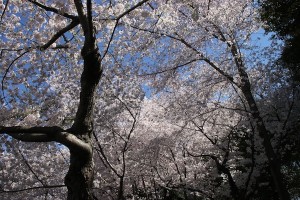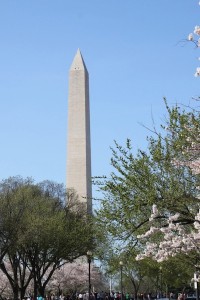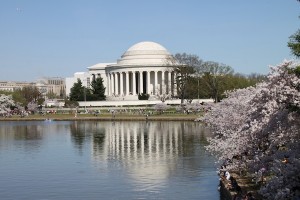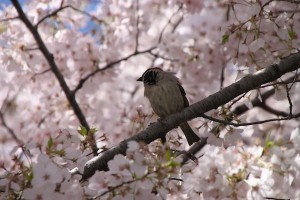Cherry blossoms are always a winning sight, but they were especially enchanting this spring when, with a couple of friends, I spent a weekend in Washington, in 2014, during the city’s two-week National Cherry Blossom Festival.
We went into full tourist mode, watching the National Cherry Blossom Festival Parade (on Constitution Avenue), wandering for a few hours among hundreds of trees and working in visits to monuments and museums. We were very lucky for weather with clear skies and temperatures that may have hit 80 on parade day.
More than 1.5 million people from across the globe come to D.C. for the festival, which makes for large crowds, especially on the weekend. In our experience, the metro system was more crowded on the Saturday of our visit than during Monday morning rush hour. But festival goers, no doubt buoyed by the gorgeous scenics, were generally polite and patient.
I don’t have a lot to say about the parade; it was much like other American parades except for the theme and the participation of the Japanese because Japan was the source of the original trees. (Asian parades are more colorful, or if staying in the U.S., make that a Native American powwow.)
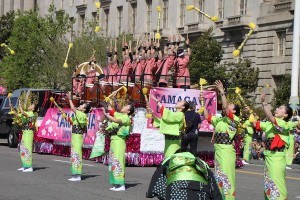
Representatives of Tokyo’s Tamagawa University enliven the National Cherry Blossom Festival in Washington, D.C.
The D.C. parade ended around noon. In one stroke, we accommodated our lunch requirements and an interest in Julia Child by visiting the National Museum of American History, a unit of the Smithsonian Institution located on the parade route.
The museum offers free entry, and the restaurant provided a quick route to a filling lunch, which is not to say the food was outstanding or cheap. (For museum food, it is much better at the Newseum on Pennsylvania Avenue, which we visited the next day; that museum is not free.)
As for the chef, Julia Child, the real kitchen from her Cambridge, Mass., home is on display (viewed through lots of glass) part of an exhibit called “Food: Transforming the American Table 1950–2000.” The idea of showing her kitchen, where you could even see the cookbook and other titles on her shelves, is a fitting way to remember a woman who had a lot to do with the transformed American table! My friends and I ogled the kitchen and its utensil collections with great appreciation!
Then, it was time to see the trees at close range. There are thousands in D.C. and the area, including in Chevy Chase, Md., but around 3,800 are under the care of the U.S. Park Service on the grounds of the National Mall and Memorial Parks.
We walked the National Mall and on around the Tidal Basin to the Jefferson Memorial, a walk that takes longer than you would think based on the map. But then, we did stop a lot.
About the trees
At the Jefferson Memorial, we listened to an NPS ranger give her spiel on the trees. That talk, along with later research at the NPS Web site, produced some delicious nuggets, as follows:
• The Tidal Basin was still in the planning stages when, in 1885, Eliza Scidmore, author, journalist, traveler and member of the National Geographic Society board, began lobbying to beautify it and the city with Japanese cherry trees.
• Officially, it was Tokyo that gave Washington its first trees. And, the first 2,000 plants, which arrived in 1910, were burned because they were diseased and infested with insects.
• After recovering from that potentially difficult diplomatic setback, Tokyo sent 3,020 younger and healthy trees in 1912. Some of those trees are still living, including the two planted by the then First Lady Helen Herron Taft and Viscountess Chinda, wife of the then Japanese ambassador.
• A few trees were vandalized soon after the Japanese attack on Pearl Harbor.
• Japan has made two more gifts of cherry trees, in 1965 and 1999.
• On three occasions, Washington has returned the favor, shipping cuttings back to Japan, in 1952, 1982 and 2011, to replace trees lost in Japan and to retain the genetic lineage of the original plants.
• The first National Cherry Blossom Festival was staged in 1935.
For more about Washington, D.C., we offer at BestTripChoices.com the following, under the headline: A planned city
https://besttripchoices.com/us-cities/washington-d-c/
This blog and photos are by Nadine Godwin, BestTripChoices.com editorial director and contributor to the trade newspaper, Travel Weekly. She also is the author of “Travia: The Ultimate Book of Travel Trivia.”



